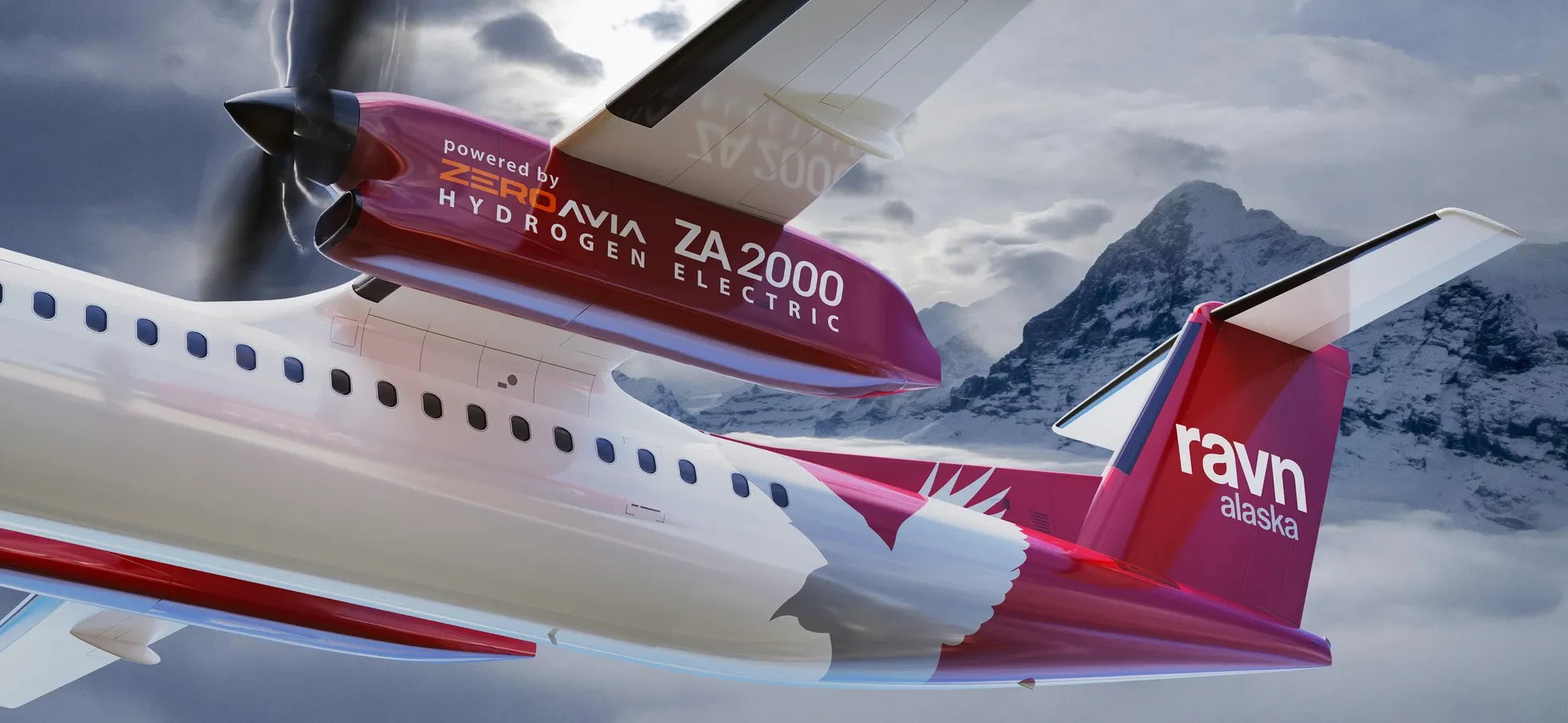Hydrogen fuel-cell developer ZeroAvia's 19-seater test aircraft is almost ready for its first flight out of Cranfield, UK. A couple of hours' drive further south, aviation industry representatives are currently gathered for the Farnborough Airshow. On Tuesday, ZeroAvia announced a new order from Ravn Alaska for 30 of the company's hydrogen-electric engines to retrofit the carrier's De Havilland Dash-8 fleet.
Zero-emission regional operations
Ravn Alaska is based out of Anchorage Ted Stevens Airport (ANC). The carrier currently operates a fleet of 11 Dash 8 regional turboprops, ten of which are of the -100 variety, whereas one is the larger -300. Rob McKinney, Chief Executive Officer at Ravn Alaska, commented on the decision to seek out hydrogen-electric propulsion for his airline's fleet,
“We want to be at the forefront of adopting zero-emission aviation once FAA-certified technologies come to market. ZeroAvia is making great strides to bringing hydrogen-electric propulsion to Alaskan skies, and we’re looking forward to working together to realize green flight.”
ZeroAvia will provide Ravn with its under-development ZA2000 2–5 megawatt modular powertrain. This is designed for 40 to 90-seat turboprop aircraft and is intended to become operational in 2026. It will target a range of 500 plus NM, which means it could operate routes such as Anchorage to St Mary's, which is a two-hour flight with zero emissions.
Simple Flying is at the Farnborough Airshow this week. For all the latest news from the show click here!
Launch Alaska climate tech accelerator
In addition to the Memorandum of Understanding (MoU) signed with Ravn, ZeroAvia has been accepted to the Launch Alaska program. This is a non-profit accelerator that is set up to support the activity and growth of climate tech innovators in the state.
Val Miftakhov, Founder and CEO of ZeroAvia, commented on the particularities of the state and how it presents a perfect launch pad for hydrogen-electric propulsion,
“Alaska represents the challenge facing the aviation industry writ large— air travel provides the vital connectivity that Alaskans so desperately need, but at the same time, the impacts of climate change on the breathtaking landscape are starkly visible. With its ample renewable energy supply and network of airfields, the state is the perfect place for some of the world’s earliest hydrogen-electric, zero-emission routes."
PowerCell Sweden to provide fuel cell stacks
It is difficult to create fuel cells and revolutionize regional aviation without the appropriate supply chain. At the beginning of the week, ZeroAvia also announced an MoU with hydrogen fuel cell stack manufacturer PowerCell Sweden AB. This will see the joint development and deliveries of at least 5,000 aviation-optimized Proton Exchange Membrane (PEM) fuel cell stacks between 2024 and 2028. PowerCell Sweden will also establish a presence in the UK, setting up shop alongside ZeroAvia's production facilities.
Rickard Berkling, CEO of Powercell Sweden, commented on the agreement, which is expected to reach its final version before the end of the third quarter this year,
“Working with ZeroAvia has been a core plank of our entry into the clean aviation market, which is a very large future market for fuel cell technology. We are delighted to further formalize that partnership and to establish our first UK development presence, given our opportunities here across multiple sectors.”
Are you looking forward to hydrogen-powered flight? Leave a comment below and share your thoughts.


.jpeg)
